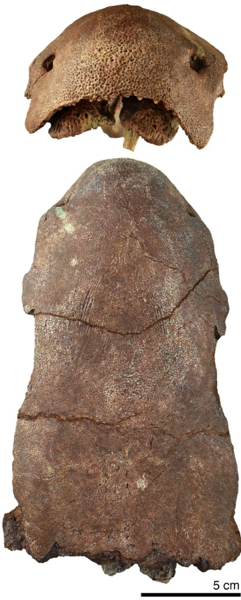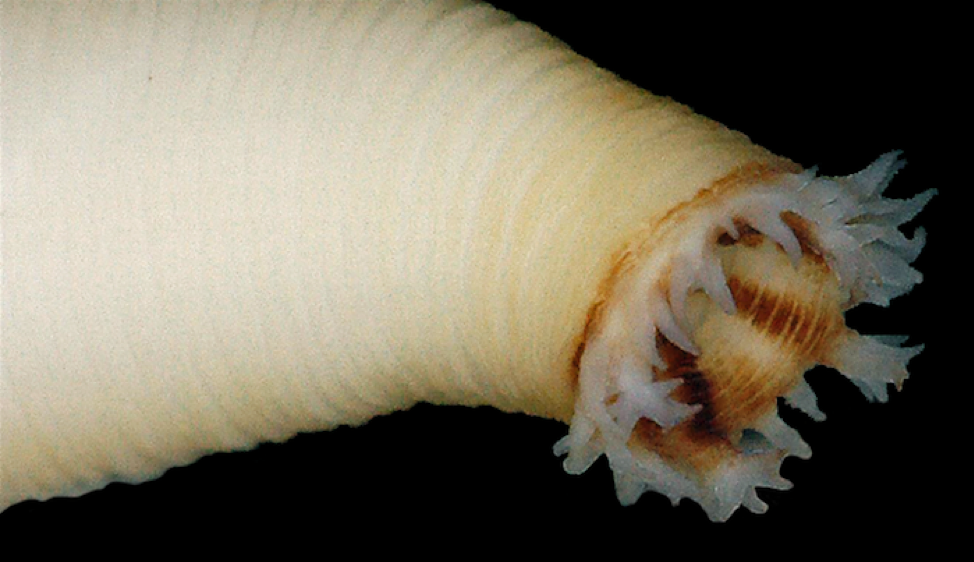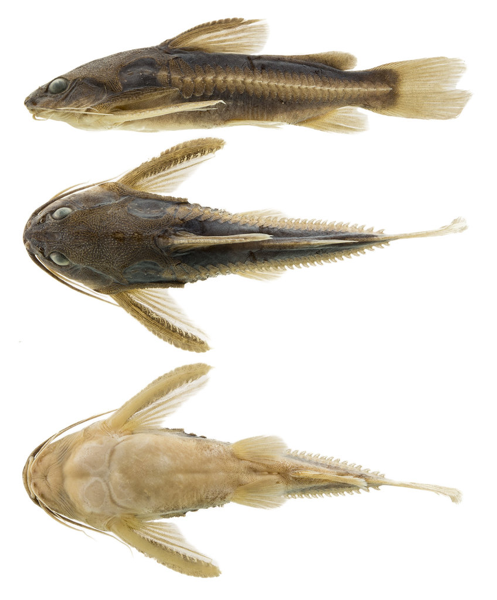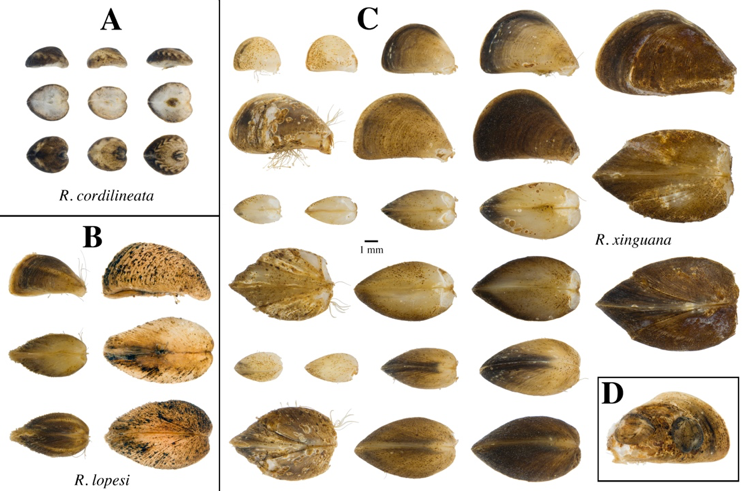New Species Announced at the Academy: 445 Days in Rewind
By Emily Storz
March 22, 2019
The continued discovery and documentation of new species shows life on Earth can still surprise us – and it’s clear that conservation and proper cohabitation of this world is increasingly important. Scientists at the Academy of Natural Sciences of Drexel University helped discover and recently published a few new slimy, shelled and fossilized species within the past 445 days, and each instance serves as a reminder of just how important biodiversity is.
 Partial skull of Eusthenopteron jenkinsi viewed from the front and from above. Photo credit, Sam Bunson.
Partial skull of Eusthenopteron jenkinsi viewed from the front and from above. Photo credit, Sam Bunson.
Academy scientists have helped enter countless new species into the scientific record. Below, is a quick look at the newly discovered fish, algae and mollusks – all recently added to the catalog of life.
Ted Daeschler, PhD, associate professor in the department of Biodiversity, Earth & Environmental Science at Drexel’s College of Arts and Sciences and associate curator of Vertebrate Zoology at the Academy of Natural Sciences, and his colleagues have uncovered a treasure trove of Late Devonian-age (375 million years old) fossils from Ellesmere Island, Nunavut, Canada. Those collections include a new species of lobe-finned fish that they recently named to honor their late colleague Farish A. Jenkins, Jr. The new species, Eusthenopteron jenkinsi, is part of a group of aquatic predators from the Late Devonian that were closely related to the earliest limbed animals.
Richard M. McCourt, PhD, professor in the department of Biodiversity, Earth & Environmental Science, curator of Botany and director of the Center for Systematic Biology and Evolution at the Academy of Natural Sciences, was part of a team that encountered a rare and unusual green alga during a broad survey of California’s stream algae. The specimen represented a new species of the primarily marine genus Ochlochaete. Ochlochaete incrustans sp. nov. grows in dense, lime-encrusted mats in fast-flowing streams.
Gary Rosenberg, PhD, is a professor in the department of Biodiversity, Earth & Environmental Science and Pilsbry Chair of Malacology at the Academy of Natural Sciences. Rosenberg was part of team that described a new and anatomically divergent genus and species of wood-boring bivalve (Teredinidae) from the Philippines, named Tamilokus mabinia. Including Tamilokus the total number of genera in this economically and environmentally important group of wood-boring bivalves grows to 17.
 Tamilokus mabinia. Photo credit, The Academy of Natural Sciences.
Tamilokus mabinia. Photo credit, The Academy of Natural Sciences.
Mark Sabaj, PhD, interim curator of fishes at the Academy of Natural Sciences, was part of a team of researchers that uncovered a new species of Platydoras from the rio Xingu Basin in Brazil. Platydoras birindellii is commonly found in rocky clearwater rapids and is identified, in part, by its uniformly dusky dorsal and caudal fins.
 Holotype of Platydoras birindellii, n. sp., INPA 57507 (77.5 mm SL); Brazil: Pará: rio Xingu, Pedra Preta, São Félix do Xingu, 6°57’31”S, 52°15’27”W, 22 Sep 2014, L.M. Sousa, A. Gonçalves & C. Martins. Photo credi, L.M. Sousa.
Holotype of Platydoras birindellii, n. sp., INPA 57507 (77.5 mm SL); Brazil: Pará: rio Xingu, Pedra Preta, São Félix do Xingu, 6°57’31”S, 52°15’27”W, 22 Sep 2014, L.M. Sousa, A. Gonçalves & C. Martins. Photo credi, L.M. Sousa.
Sabaj was also involved in the discovery of two new species of minute bivalves from the rapids of clearwater tributaries to the lower Amazon River. The name cordilineata is derived from the Latin words cordis (heart) and lineatus (marked with lines) which references the distinctive shape and color pattern of the new species. The second minute bivalve, xinguana is named to honor the 20 indigenous peoples in the Xingu Basin who consider the river to be sacred. Despite their small adult size (<1.5 cm in length), females brood young and release them into the environment as tiny shelled juveniles less than 1 mm long. The two new species belong to the same family as the zebra mussel (Dreissendae), a species native to Europe and widely invasive in U.S.
 Photo credit, Mark Sabaj, PhD.
Photo credit, Mark Sabaj, PhD.
Media interested in speaking to any of the featured researchers should contact Emily Storz at els332@drexel.edu or 215-895-2705.